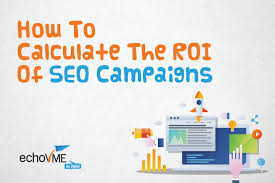
What does Return on Investment mean for SEO?
This is a metric used to judge the success of an SEO strategy based on the estimated return of the initial investment or based on the cost to push it. When estimating the SEO performance, search volume, and organic traffic is always a great indicator that at the end of it all the true measure of success will be seen.
Showing the potential return on investment of the SEO is always incredibly important when you try to communicate the value of the SEO to a client internally. Or, it is even important for your higher-up because they should implement a recommendation or invest in your proposed strategy.
How do you calculate the Return on investment of the SEO?
There is an internal SEO ROI calculator that is used for all accounts across the seer. This will streamline the process and help you in determining the estimated value for SEO opportunities. Besides using the SEO ROI calculator, you can use the important metrics and formulas which will also help you in the whole process so long as you know what metrics and formulas you need then creating your own SEO ROI calculator will be ok.
1. Find out your Average Click Through Rate by position
2. Pull your conversion rates for each Analytic goal
3. Identifying the values of each conversion goal
4. Based on search volume, work on estimating traffic and Revenue
5. Calculate the estimated SEO return on investment
1. Find out your Average click-through rate by position
I would advise someone to find out the click-through rate to use big data because using powerBI data visualization software will help you in calculating the average CTR that is branded or not branded for you to get the best positions for rankings. Ask yourself where you are going to rank on the first page across the board which is a no because we all know that rankings always tend to fluctuate the consistency and some keywords will have better performance and others will have a poor performance. However, this estimated guide just provides guidelines on what to expect for each ranking bucket.
When using the CTRs, always ensure that your data is refreshed at least every six months as well as after a site redesign. This is to ensure that your calculations are very accurate and Up-to-date as possible.
2. Pull your conversion rates for each analytic goal
When using Google Analytics, make sure you identify the conversion rate for each goal like the newsletter signups among others that you use to measure for the SEO performance, because when we are taking of the conversion rates then the historical data should be within 3-6 months.
3. Identify the values of each conversion Goal
You always need to know that without an estimated value for each conversion you are tracking, then it will be very impossible to estimate the return on investment of any marketing on your site. So, it is always important to assign value to goals in analytics. Note that you are not supposed to have a dollar value assigned to your SEO goals.
4. Based on the search volume work on estimating traffic
Once your CTR is ready and you know your goal value, then you need to set to start estimating ROI based on the search volume opportunity.
5. Calculate the Estimated SEO ROI
After all the calculations we know that return on investment is the ROI divided by the investment.
Calculating revenue for conversions
The main aim of this is a content asset is to drive form fills that have high values. In analytics, you are to determine that over the 6 months. Knowing that you are estimating the asset to drive certain organic sessions a month you will be in a position to calculate how many forms fills the organic visitors will complete.
How to find the Dollar value of your Conversions
Because not everyone who works in eCommerce will know the value of their conversions or will have the goals set up in analytics. The clients who don’t know the value of conversion will be asked some questions like to guess at what lead or conversion will be worth closer to $100 more or less. From there you can now narrow it to a number that will give you a better idea.